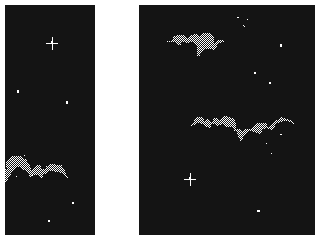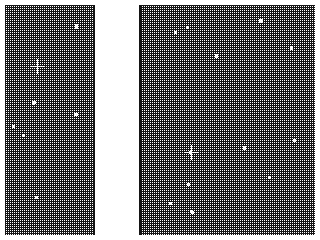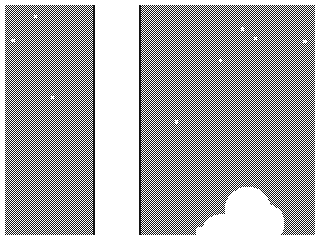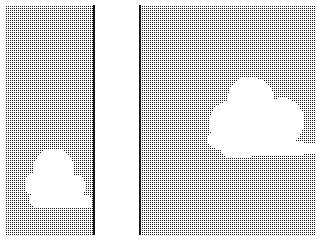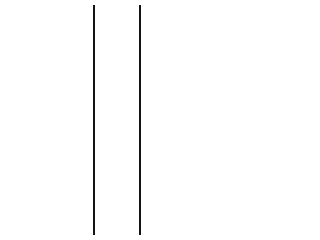Problem - Blog Posts
Death Note💚 This song describes this show perfectly😂
Don't leave a guy hanging!
A couple of weeks ago I donated platelets for the first time after years of donating whole blood and plasma. Everything seemed to go just fine until today. I got call asking if I could donate platelets again and the the person leaving the message said, "No, wait there was a problem with the platelets, could you donate whole blood or plasma instead."
That was it. There was no explanation of what the "problem" was. The woman just left me hanging. Come on, you can't leave a message like that without explaining the nature of the "problem."
I shot the Blood Source an E-mail and got a quick response saying that my platelet count was in the normal range, but just too low for donating on their current machines. Fine, in the future you could tell me that right up front instead of leaving me hanging.
As marketing overwhelms university life, it generates documents about fostering imagination and creativity that might just as well have been designed to strangle imagination and creativity in the cradle. No major new works of social theory have emerged in the United States in the last thirty years. We have been reduced to the equivalent of medieval scholastics, writing endless annotations of French theory from the seventies, despite the guilty awareness that if new incarnations of Gilles Deleuze, Michel Foucault, or Pierre Bourdieu were to appear in the academy today, we would deny them tenure. There was a time when academia was society’s refuge for the eccentric, brilliant, and impractical. No longer. It is now the domain of professional self-marketers. As a result, in one of the most bizarre fits of social self-destructiveness in history, we seem to have decided we have no place for our eccentric, brilliant, and impractical citizens. Most languish in their mothers’ basements, at best making the occasional, acute intervention on the Internet. It is proverbial that original ideas are the kiss of death for a proposal, because they have not yet been proved to work.
David Graeber
I solved the Runoff problem of Harvard's CS50 course last month. Watch the full video on YouTube. Link to the video is in bio or directly search Veer Da Vlog on YouTube. . #VeerDaVlog #cs50 #runoff #youtube #coding #harvarduniversity #programming #problem #solving #clanguage #100daysofcode https://www.instagram.com/p/CHLFBcGAog8/?igshid=1lu10ho0ofxs9
Trichotillomania Struggles
- The constant worrying that you'll make yourself go bald.
- Confused why you starting pulling your hair out in the first place.
- Being in public (or even just by yourself) and resisting the urge to put your hands on your scalp.
- That awkward moment when someone catches you pulling.
- Stratigically planning hairstyles to hide possible bald spots.
- Wanting to go to the hair salon but having the constant fear that the person working with your hair will notice.
- Not pulling for a long period of time, and you realize you haven't pulled which makes you think of pulling and you suddenly do it with out thinking and you hate yourself.
- Intense feeling of guilt and hatred after pulling.
- Finally getting the courage to tell a doctor but them telling you they can't do anything about it.
- Sitting in class and fearing that the person behind you might be looking at your hair and knows.
- Not seeing/feeling any bald spots in a certain location, so subconsciously letting that be a reason why it will be okay if you pull more there.
- Getting ingrown hairs on your scalp
- Wanting nothing more some moments than to just yank all your hair out.
- Wanting to stop pulling, but remembering that you've been doing it since elementary school so maybe there is no hope?
- Writing that you have trich online and getting the feeling they'll assume you're some grotesque bald creature when you're not. You're just another sensational human with the tendency to pull your hair out.
- Hair is everywhere on the floor of your room and it is gross
- Disgusting yourself.
- Keeping it a secret from everyone.
- Feeling embarrassed at just the thought of it.
- Dreaming about life without it.
- Nobody seems to understand.
- 'Why can't I stop??????'
- 'I hate my hair.'
- Seeing photos of bad trich cases online and fear that that will be you someday.
- Family or friends (who know) tell you to stop and you dont know how to respond because you've been telling yourself to stop ever since you've started and it's not that easy.
- Wanting someone to talk to about it but also not wanting to talk about it.
-Not knowing how to stop.
I mean, it could be worse. At least we're alive.

Man if I had any money.

I can't fucking hear the 22hz frequency in a silent roommmmmm.........








Ideas for Teachers: Apollo Mission Control Simulation Lesson Plan
In this activity students will watch clips of system failures from Apollo 13 movie and must come up with their own solutions to the problem. This activity would be good for 3rd or 4th graders but can be modified to be harder or easier.
Introduce the Flight Positions
Split up students into five groups EECOM (Electrical Environmental and Communication) Power, EECOM Environment, BOOSTER, GNC (Guidance and Navigation Control). and SURGEON. They should have paper and a writing utensil.
Teacher: "You are each flight controllers in NASA's Mission Control in Houston, TX. Have a picture on the board of NASA's mission control. For this mission I am the flight director but you are all experts on a space craft system. You are in charge of three astronauts heading to the Moon in this space craft. If you have something you want communicated to the astronaut you must tell me. Have a picture of the Apollo 13 command module attached to the Lunar Lander on the board.
Point at EECOM Power
Teacher: "EECOM Power, you are in charge of the power system that keeps the communication system, computers, heat, and lights on the space craft. You will get data on the battery level, amps, volts and which systems are on."
Point at EECOM Environment
Teacher: "EECOM Environment, you are in charge of the air system on board the space craft. This means scrubbing the carbon out of the air and supplying enough oxygen. You will get data on the O2 CO2 and poisonous gas levels."
Point at BOOSTER
Teacher: "You are in charge of the boosters that fly the astronauts too and from the Moon. You make sure that there is enough fuel to accomplish each task. You will get data on the fuel level and functioning boosters."
Point at GNC
Teacher: "You are in charge of making sure the space capsule is flying in the right direction. You will get data on the flight path of the space craft."
Point at SURGEON
Teacher: "You are in charge of the health of the astronauts. You will get data on their temperature, vital organs, and comments from them on their well being,"
Above are examples of data slides you can display I made with an old Mission Control Picture. Note that these levels and figures in coming up simulation data are not very accurate. For example - in reality over 15% CO2 would cause black outs and brain asphyxiation. What is most important is that data is fluctuating and the students learn what data is important, how to write down observations and react.
Begin Mission
Pull up the current and nominal flight data on the board.
Teacher: "Here is the current data for each of your systems. Write them down because they may change and you may need to fix your systems when something goes wrong."
Students write down data.
Houston We've Had A Problem
Teacher: "These three astronauts are on a mission to the Moon, but something goes horribly wrong. And you have to do something about it. Let's see what happened..."
Show this clip: https://youtu.be/kAmsi05P9Uw
Teacher: "You are tens of thousands of miles away from the astronauts but must fix the problem. Pull up the new set of data. Here the latest data. Tell me whats wrong and how you think we can fix it.
Students write down new data and discuss among themselves whats going on. Students then let the flight director know whats going wrong. Change the data three times so it fluctuates, don't wait for students to write everything down, this is a real time crisis and things won't run as planned.
Example of data slide 4, the vitals show error because in real life the Apollo 13 astronauts took off their vital sensors for privacy.
Teacher checks in with EECOM Power and lets students share their thoughts
Teacher: "Looks like we are loosing power rapidly and can only use certain devices at once. We need to figure out how keep the astronauts alive, send data back to Earth using the computers, and collect enough data on board so we can keep each flight team updated. Hand them batteries, paper clips/ wires, lights and switches. Each light represents an electrical device on board. You must find the correct electrical configuration to power the devices and order in which they must be powered on."
Teacher checks in with EECOM Environment & SURGEON and lets students share their thoughts
Teacher: "Looks like we are losing oxygen for the astronauts to breath. How long till its all gone? Students suggest answers. Here are the materials on board to create a new air filter. This square peg in a round hole. Make it work. Dump the materials on their table." Inspired by this clip: https://youtu.be/C2YZnTL596Q
Teacher checks in with BOOSTER & GNC and lets students share their thoughts
Teacher: Has BOOSTER & GNC sit closer to each other "Looks like we are off trajectory to the moon, the lunar lander is broken, the space craft is accelerating in the wrong direction we are losing fuel and the only logical thing to do now is head back to Earth. Both of you are needed to solve this problem. Give them a model of Earth, Moon, Capsule and attached Moon Lander. Work together to figure out how to then back to Earth with limited fuel."
Teacher: Talking to all. "Once you come up with a solution come up to the front and explain to your fellow flight controllers what you came up with and why it will work. The other flight controllers can argue if they think it won't work and why. Astronaut lives are at stake so it is necessarily to speak up if something is a faulty idea or you have a better solution."
Students work to solve their problems. Give them a little bit of time to work on it. After each team presents their solution.
Teacher: "Let's see how the NASA engineers solve the problems you were given..."
Note: You may want to scan these clips for swear words before showing them in class. And end the clip accordingly.
EECOM Power: https://youtu.be/KhoXFVQsIxw
EECOM Environment & SURGEON: https://youtu.be/Zm5nUEG5Bjo
BOOSTER & GNC: https://youtu.be/gmLgi5mdTVo
Teacher: "Lastly let's see if the crew makes it back after your adjustments"
https://youtu.be/-1BPx5Wsm7k
Celebrate with astronaut ice cream!
Not gonna lie, it is getting too hard for me to draw Dancing Rasta's face.

It's still incomplete.
Sayonara ~
My mom found the copy in which I write my gay Supa Strikas stories. What should I do now!?
Sayonara ~
ariana grande - problem (lyric video) ft. iggy azalea (2014)
obsessed w this 60s concept ! 🎼
problem
I just add on to all your other problems. I make you down constantly. your life would be so much easier if I wasn't apart of it. you don’t deserve this, you deserve someone better. someone who doesn't add on to your problems. someone who makes you happier not down. you deserve someone who isn't me.
I’m sorry I'm like this but I can't help it. I constantly think of why. why me? why does he love me? and I can never understand why. I'm not good for you. you shouldn't have to deal with this constant pain and burden of having to deal with me. I'm sorry.

Is Chat GPT a good replacement for learning a language? (part 1)
It's a legitimate question. Of course I am biased as a language instructor, I want to shout 'no!' I have already spent time in classes arguing why it is not a healthy path to take, but my counter-arguments are thinning out as the technology gets better.
Around this time last year, I had just heard about Chat GPT when a few students were rumbling about it. I thought it was just a chat bot like a lot of websites use, so I brushed it aside. When I finally read about it, I had to check it out. I did as a lot of people did the first time, entering into an argument about which movie robot character was the GOAT (Greatest of All Time) or launching into some juvenile chat thread. It impressed me suitably. Since then, I got it to write a sales e-mail for me, correct my Japanese in another e-mail I was writing and help me with a difficult calculus question I was studying.
Math has been a tough one for me and it was here that I had my first instance where I doubted the integrity of the AI's ability. It gave me a wrong answer. It was a minor miracle that I could spot that the answer was wrong in the first place, if I was relying on it as my tutor, I was in trouble! When I called it on its error, it did remind me that it is a language engine, not a mathematical one but it left me wondering where else it might let us down.
I then started searching the web for articles about Chat GPT's accuracy and I found an article where they asked the AI service to write a summary of a book. It gave a great description and school-worthy report that would have scored top marks. The thing is, the book didn't exist! Okay, I can't find the link, but here is a case where it summarizes a book completely incorrectly. And here are some links where Chat GPT makes up reference lists with non-existent resources (LINK) (LINK).
On top of these academic shortcomings, last year I was trying out a job representing a beverage-related company and asked Chat GPT to give me a list of up and coming beverage companies in Japan. You guessed it, the list contained all companies that don't exist at all.
I have a theory of why this is. You can imagine the panic spreading from educational institutes over the implications of having such a powerful automatic writing tool available for free. The integrity of schools is in peril as more and more students are handing in Chat GPT generated reports as we speak. The key is to build in some fallibility to deter students from cheating. The prospect of saving themselves hours of research which would take previous generations months to compile is too alluring for young students. Therefore, the mistakes are put in on purpose to keep it a fun, yet powerful service for students. But business owners know that it can be adapted for business needs and help make money for the developers.
This chink in the armor is one reason why I would not trust the new powerful AI sites to handle a company's communication requirements. When you consider how important communication is for the success of your business, you can see why it is better to stay in control of your destiny by doing the communication yourself.

Difficult
Sources: SigningSavvy, Lifeprint, ASLDeafined
[Image ID:
Difficult or Problem in American Sign Language. Both hands in bent V handshape, palm facing signer scrape past each other. Movement is illustrated by arms that are translucent green and blue in different stages of the sign.
End ID]
When I was seven-years-old child and I wrote my first essay in school. While everybody else tried to make it longer, I was asking my techer for another paper, because “Three pages on a novel about a dragon eating lollipops just isn’t enough!!!”
When did you realize you had a knack for writing?
Sangaku Sunday Bonus - what about the other problems?

In the sangaku series, we've solved two of the four problems on this tablet, the middle two, which I believe were the easiest to work on in terms of geometric arguments - we hardly ever used more than Pythagoras's theorem, though the second one needed some more advanced algebra to finish off.
Here's a quick look at the problems at each end of the tablet, and the main ideas I had to solve them.

On the far left, we have two circles tangent to one another (with centres A and B), inside a larger circle (with centre O) so that their diameters add up to the diameter of the largest. The radii of these three circles, respectively p, q and p+q, are known. The unknown is the radius r of the circle with centre C, which must be tangent to all three original circles (it has a twin on the right-hand side with the same radius).
This is quite quick to solve. Remember that tangent circles mean that the distances between centres is equal to the sum of the radii, e.g. AC = p+r, BC = q+r... Al-Kashi's theorem, which is a general version of Pythagoras's theorem, links the lengths of three sides of a triangle with one of the triangle's angles, and the triangles CAO and CAB have an angle in common, which yields the equation for r by isolating this angle in each application of Al-Kashi's theorem. The result is:


The problem on the far right seems to start in a similar fashion: two circles with fixed radii are offset by a fixed distance. A third circle has its diameter equal to the remainder of the diameter of one of the large circles: this radius can be calculated with little difficulty. What we want to do next is construct circles which are tangent to the two large ones, and the one previously constructed.

The radius of the circle with centre C1 can be obtained as above, but this method does not seem to extend to the subsequent circles, as O, D and C1 are no longer aligned, and there no longer appears to be a common angle in the triangles we want to work with. So I went for a parametric approach, understanding the curves that contain points that are equidistant from two circles. The red curve (which looks like a circle but isn't one) is the set of points at equal distance from the two largest circles, and we seek to intersect this with the set of points that are at equal distance from one large circle and the smaller one, the green curve. The intersection is equidistant from all three circles, so it is the centre of the circle we want to construct. Rotate and repeat for subsequent circles.
The general formulas are horrible and not worth showing, but this is another problem where I have been able to read the results on the tablet. The large circles have radii 61 and 72, and the offset is 23. The radii of the smaller circles, starting with the one in the middle and working outwards are:
17, 15.55, 12.292, 8.832 and 6.038 (I see 八, but I'll give the authors the benefit of the doubt as the top of the character 六 may have been erased by time)
The results with our exact formulas are:
17, 15.58, 12.795, 9.076 and 6.444
Rather close! As with the "three circles in a triangle", I do not know how the authors originally solved this problem.
Sangaku Saturday #13

Last week, we uncovered this configuration which is also a solution to our "three circles in a triangle" problem, just not the one we were hoping for.
This is something that happens in all isosceles triangles. Draw the inscribed circle, with centre B, and the circle with centre C, tangent to the extended base (ON) and the side [SN] at the same point as the first circle is. Then it can be proved that the circle with centre A, whose diameter completes the height [SO] as our problem demands, is tangent to the circle with centre C.
But that's not what I'm going to concentrate on. Despite this plot twist, we are actually very close to getting what we want. What the above configuration means is that, returning to the initial scaled situation with SO = h = 1 and ON = b, we get

Knowing a solution to a degree 3 equation is extremely powerful, as we can factor the polynomial and leave a degree 2 equation, which has simple formulas for solutions. So, to finish off, can you:
1: prove that

2: solve the equation 2x²-(s-b)x-1 = 0, and deduce the general formulas for p, q and r that fit the configuration we are aiming for;
3: test the formulas for an equilateral triangle, in which s = 2b.
This last question is the one the sangaku tablet claims to solve.
Sangaku Sunday #11

We're almost there! We have three relations between our unknowns, the radii p, q and r. Actually, let's write them in the general setting, with any height.
Set SO = h and ON = k (so the number b in the problem so far has been equal to k/h). Repeating what we've done in previous steps, and substituting q and r in the final equation so that we get an equation with just p (I've done it so you don't have to), this is what we're solving:

The plan is simple: get p with the last equation, deduce q then r with the first two. The execution of the plan... not so simple. That last equation is messy. Let's tidy it up a bit by noting that it is actually a polynomial equation of the variable x=squareroot(2p):

There are formulas for the solutions to an equation like this, but if we can avoid using them, we'll be happy.
Here's what I did - and you can do too: a numerical test. Let's take the simplest dimensions for a right triangle, h = 4 and k = 3. Replace in the last equation and notice an obvious solution. Deduce p, then q, then r. Jubilate - until you realise something is very, very wrong...
Sangaku Saturday #9
As in every odd-numbered episode, we're going to set a problem - the next stage towards solving the "three circles and a triangle" sangaku. We are looking for one more equation between the radii p, q and r, it will be obtained with a similar method to the previous step... but the formulas will be a bit longer, so roll your sleeves up and don't be scared!

Here are the lengths we know:
SO = 1 , SN = b , SA = p , BO = q , CQ = r and

Here is also a list of known pairs of perpendicular lines:
(SO) and (ON) , (SO) and (PC) , (ON) and (CQ) , (SN) and (CR).
[P, Q and R are defined as the orthogonal projections of C onto the sides of SON.]
The equation we are looking for will come from getting two expressions for the square of the length CN.
You can work out how to do this by yourself if you feel like it, or check below the cut for the steps and to check your result. As always, details and a bit of history next week!
1: After working out the length QN, get a first expression of CN² by using Pythagoras's theorem in the right triangle CQN.
2: Proceed similarly in the cascade of right triangles CPS, CRS and CRN, to get a second expression of CN².
Conclude that

Sangaku Sunday #7
We're back with a new problem from Miminashi-yamaguchi-jinja! This is going to be more ambitious than the first one, though it won't be much harder from a geometry standpoint - the main tool will still be Pythagoras's theorem. But we really need to set the stage for this one.

Consider an isosceles triangle, with two circles whose diameters are on the height from the apex, tangent to each other, and so that the top circle passes through the apex and the bottom circle is tangent to the base. We seek to draw one more circle on either side, which is tangent to the first two, and tangent to two sides of the triangle.
Details and first questions below the cut.

The triangle is given: it is an isosceles triangle SNN'. For the sake of simplicity, let's shrink or blow up the figure so that the height SO is equal to 1 (for a configuration with height h, we will just need to multiply all the lengths by h). The length of the base NN' is therefore the fixed parameter of the problem, and, as the figure is symmetric with respect to SO, we only need to set the length ON as our parameter: set ON = b. Hence, we are working in the right triangle SON.
The problem involves finding the three circles that fit the configuration in SON. Let these circles have respective centres A, B and C, and respective radii p, q and r. The radii are the unknowns of our problem, and we need to find three independent relations between them to solve. From the sketch, it looks like there should be only one solution.
The first relation is obvious: 2*(p+q) = 1, as the diameters of the first two circles form the height SO. This is also very easy to solve: if we have p, then q = 1/2 - p.
A second relation must start to involve r. For this, project the centre of the third circle onto SO and ON, calling these projections P and Q respectively. Now we get to two questions for you to munch on.
1: Prove that

2: Get the lengths AC and PA. Deduce another expression for PC, and prove that

With that, we just need another equation to find p, and we'll be done.
Sangaku Saturday #5
This is it, we've reached our first full sangaku problem! (At least one that I've seen on a real-life tablet.)
We set up the tools in previous posts, so I'll let you work this one out by yourselves: given two circles which are tangent to each other and tangent to a same line, what can you say about the radii of the three smaller, light-coloured circles?





